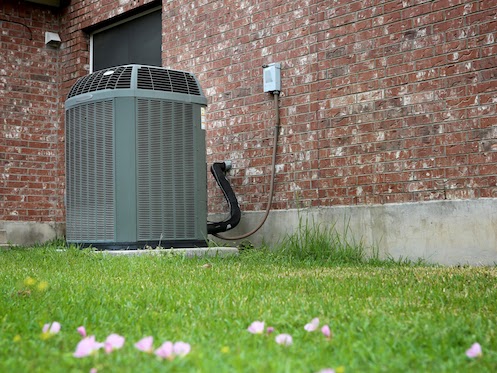Oklahoma City residents often prioritize various tasks, but worrying about heat pump maintenance is typically one of the last things on their to-do list. Heat pumps inevitably encounter breakdowns like any other appliances and require maintenance and repairs. Adequate maintenance can enhance energy efficiency by up to 25% for certain heat pumps. It reduces expenses, minimizes repair needs, and prolongs the life of your heat pump. Here are some heat pump maintenance items a technician will handle during maintenance.
Professional Preventive Heat Pump Maintenance
HVAC technicians have in-depth knowledge about the functioning of your heat pump. They can identify potential serious problems and help prevent them before they happen. You should expect an HVAC professional to do a series of things when working on your heat pump.
1. Lubrication
Lubrication is among the most important factors in maintaining a heat pump. Lubricating your heat pump separates moving parts, such as bearings, and reduces unnecessary friction and wear and tear. Lubrication can facilitate heat absorption and minimize contamination. Professional technicians know the right amount of lubrication to add. Excessive lubrication, using the wrong lubrication, or not using enough lubrication can lead to equipment failure, and proper operation will be compromised.
2. Clean Condensate Drain
The condensate drain is the line that goes from your heat pump and leads outside. They are typically made from PVC pipe or metal. They allow your heat pump to funnel off any humidity and condensation. The condensate drain line is a key part of your heat pump because it prevents excess moisture from building up, leading to potential damage. During scheduled maintenance, your HVAC tech will clean your condensate drain line, preventing clogs. Clogged drain lines can lead to poor indoor air quality, mold and mildew growth, and increased humidity.
3. Check Air Filter
The air filter’s primary function is to prevent dust and contaminants from accumulating inside the heat pump. As air passes through the filter, it captures and stops dirt and dust from entering various parts of the system and circulating throughout your home. Over time, filters accumulate significant dirt and debris, obstructing the heat pump’s interior entrance. A dirty air filter can obstruct airflow, potentially diverting air into the heat pump through an alternate path and allowing unwanted dust, dirt, and debris to enter. If left unchecked, this can diminish the system’s performance and your home’s comfort.
4. Clean the Condenser and Evaporator Coil
The condenser coil, situated outside your home, and the evaporator coil, a part of the indoor unit in your heat pump, play crucial roles. When the condenser coil becomes dirty, energy bills tend to rise as the system works longer and harder to achieve the desired temperature. The accumulation of dirt and clogs in the coils increases the system’s workload, leading to faster wear and tear on specific components. Opting for professional coil cleaning on an annual basis reduces the necessity for these repairs. In the long run, the strain on your system due to dirty coils will diminish its expected lifespan. Consequently, you may find yourself investing in a new HVAC system sooner than expected. Dirty condenser and evaporator coils escalate electricity consumption, drive up operational expenses, and result in more frequent breakdowns.
5. Inspect Pulleys, Belts, and Other Components
An HVAC technician will inspect pulleys for rust, grease, debris and other foreign material. Worn pulleys can lead to slippage and excessive heat buildup. The technician will also ensure proper alignment. Pulley alignment is key for your heat pump to achieve maximum belt life. They will also ensure that the belt brands are the same. You don’t want to mix new and old belts, as the new belts will carry the entire load. Any mixed belts will lead to the load being carried evenly, causing the heat pump to fail prematurely.
6. Measure Refrigerant Levels
Proper refrigerant levels are key for proper heat pump functioning. Low refrigerant levels lead to a drop in the internal pressure of your system. This lowers the pressure of the refrigerant. Eventually, the refrigerant can get so low and cold that it leads to ice forming on your heat pump. If your HVAC technician notices that your heat pump is low on refrigerant, they will top it up for you to ensure that it is working properly.
7. Inspect Electrical Wiring
Heat pumps require a specific frequency, voltage, and number of phases to operate properly. Your HVAC technician will inspect the electrical components of your heat pump. This includes inspecting the capacitors, wiring, and connectors. They will also review the access panel, service valves, and blower shut-off to ensure they function properly.
8. Critical Components Check
This step involves thorough checks on various critical components. The defrost assembly is examined, and the functionality of the defrost timer is confirmed. Testing the crankcase heater is vital to prevent potential performance issues that could harm the compressor. Monitoring coil temperatures is essential, as variations across a coil may indicate underlying issues. Additionally, the technician checks safety panels and other features to confirm the unit operates and responds as expected. They meticulously test thermostat sensors and ensure the thermostat accurately reflects the current conditions in the space. Examining unit disconnect switches and testing time delays is crucial to prevent electrical hazards. Moreover, the technician pays attention to unit placement and elevation to mitigate drainage problems, freezing, and other potential issues. These comprehensive steps collectively contribute to a well-maintained and efficient heat pump system.
9. Examine the Thermostat
One of the most important aspects of preventative maintenance for heat pumps is ensuring the thermostat works as it should. A broken thermostat cannot communicate with the heat pump, so knowing the temperature in your home is impossible. If it is found that your heat pump is not responding to your thermostat, your HVAC technician may schedule further maintenance and repairs.
10. Check the Heat Exchanger
One of the key jobs of the heat pump is to take warm air from inside your home and transfer it outside your home. This is accomplished by the heat exchanger. If your heat exchange doesn’t work, your heat pump won’t work.
Steps to Take Between Professional Preventative Maintenance
In between maintenance calls, it is crucial for homeowners to take proactive steps to maintain their heat pump and ensure energy efficiency. Regularly cleaning or changing the air filter is essential, ideally following manufacturer recommendations or at least once a month with frequent system use. Additionally, maintaining adequate airflow around the outdoor unit by clearing foliage and debris and ensuring a snow or ice-free environment in winter is crucial for optimal heat pump function.
Periodically inspecting and cleaning the outdoor coils as per manufacturer guidelines and keeping supply and return registers dust-free aids in efficiency. While these tasks are valuable, it is essential to emphasize that entrusting HVAC maintenance to professionals is key to the system’s longevity and efficiency.
True Climate, True Service, and True Comfort in Oklahoma City
At True Climate Heat + Air, we are proud to be a leader in the HVAC field. Our technicians are experienced and can offer a wide range of solutions. We proudly offer a 24/7 service in case of an HVAC emergency.
Our services include HVAC installation, maintenance, and repair. We work on existing construction and new construction in residential and commercial areas. Our plumbing services include water heaters, tankless water heaters, and anti-scale water systems installations. We can work on your kitchen, bathroom, and garbage disposal. Contact True Climate Heat + Air to learn more about our trusted services.


